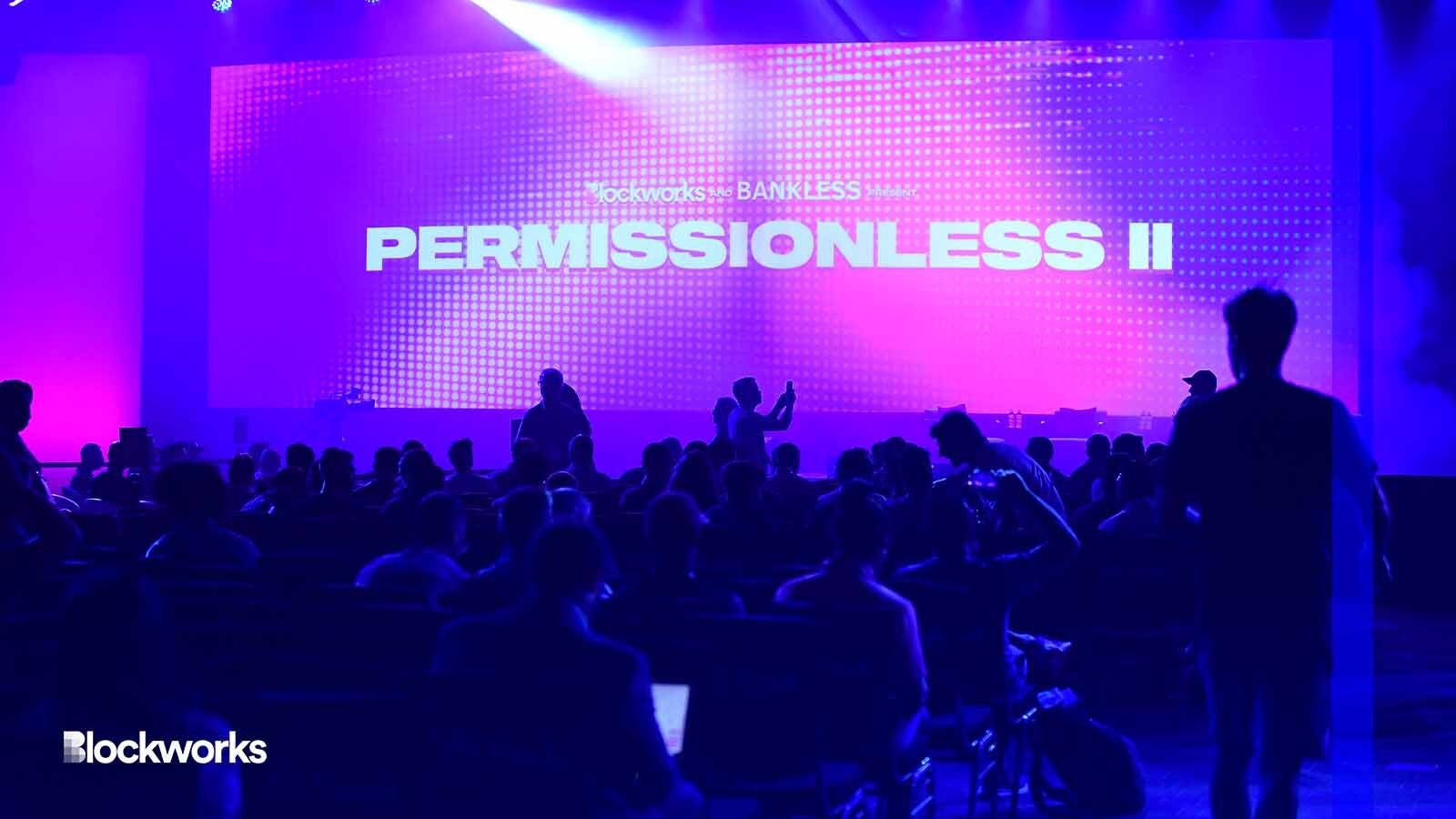Permissionless day 1: Prepping for institutional adoption
What’s the future of crypto? Based on the first day of Permissionless, it might be a suit and tie

Permissionless II for Blockworks
There’s a few superstitions that you can credibly rely on in crypto, and the dreaded “conference dump” is among them.
On the first day of Blockworks’ own Permissionless conference, attendees were greeted by a market-wide plunge driving the price of majors like BTC and ETH down 2.8% and 4.8%, respectively.
Nonetheless, price was rarely on the minds of conference-goers. In fact, the bulk of energy and attention was pointed toward the future.
The products being hawked in my laps around the booths had a particular customer: insurance offerings, institutional custody and tech stacks, and compliance solutions. Attendees have their eyes on the long game, and it’s easy to catch conversations about forthcoming narratives keeping bulls’ hopes up, including ETF approvals, institutional DeFi adoption, and real-world asset tokenization.
This is far cry from the usual chatter on Twitter. Between airdrop farming, listing snipers and emerging social verticals, there are whole new sub-sectors being birthed — and all three of these flavors of the month were notably absent on the main conference floor.
So here’s a question on my mind on the first day of Permissionless. Is the focus on institutional adoption a step ahead (preparing for a customer that hasn’t fully embraced this technology) or a step behind (not keeping up with the on-chain degens)?
In three dozen conversations, I met just one person who had set up a friend.tech account. Banana Gun, the latest sniper bot to disastrously launch a token today, wasn’t mentioned even in passing.
It’s clear that the habitual gambling crowd — perhaps the most reliable users of blockchain tech available today — and the Permissionless crowd are not the same. So who’s right?
The thing about the institutional crowd is that they’re putting their money where their mouth is. Huge quantities of resources and talent have been devoted to a particular vision of adoption. That vision doesn’t align with where the activity or users are right now, but the thesis is the TradFi rotation into crypto is where they will be.
Is that a good or a bad thing? Let me listen to a panel or two the next few days and I’ll get back to you.
Get the news in your inbox. Explore Blockworks newsletters:
- The Breakdown: Decoding crypto and the markets. Daily.
- 0xResearch: Alpha in your inbox. Think like an analyst.






